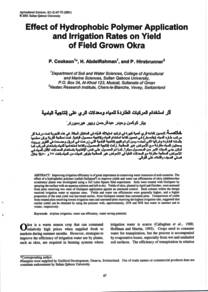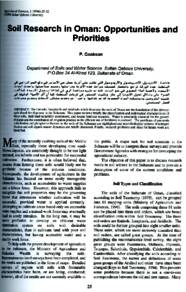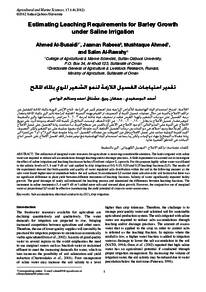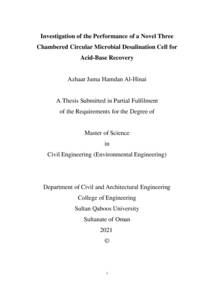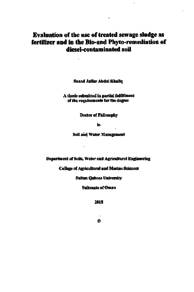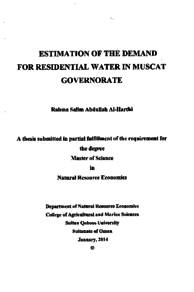Document
Effect of hydrophobic polymer application and irrigation rates on yield of field grown okra.
Contributors
Abdel Rahman, H., Author
Hirsbrunner, P., Author
Publisher
Sultan Qaboos university
Gregorian
2001
Language
English
Subject
English abstract
Improving irrigation efficiency is of great importance in conserving water resources of arid countries. The effect of a hydrophobic polymer (called Guilspare) to improve yields and water use efficiencies of okra (Adelmoschus esculentus) plants was investigated using a 3x3 Latin Square field experiment. Soils were treated with Guilspare by spraying the surface with an aqueous solution and left to dry. Yields of okra, planted in April and October, were assessed from plots receiving two rates of Guilspare application against an untreated control. Each column within the design received irrigation water at separate rates. Yields and water use efficiencies were generally higher, and a higher proportion of the total yield was harvested earlier, from Guilspare treated than untreated plots. Comparisons of yields from treated plots receiving lowest irrigation rates and untreated plots receiving the highest irrigation rate, suggested that similar yields can be obtained by using the polymer with, approximately, 25% and 50% less water in summer and in winter, respectively.
Member of
ISSN
2410-1079
Resource URL
Citation
Cookson, P., Abdel Rahman, H., & Hirsbrunner, P. (2001). Effect of hydrophobic polymer application and irrigation rates on yield of field grown okra. Journal of Agricultural and Marian Sciences, 6 (1-2), 67-75.
Arabic abstract
لتحسين كفاءة الري أهمية كبيرة في ترشيد استهلاك المياه في المناطق الجافة. في هذه التجربة تمت دراسة أثر مركب طارد للمياه (جلدسبار) في تحسين كفاءة استخدام المياه وإنتاجية محصول البامية. تمت معالجة التربة برش سطحها بالمادة الطاردة وتركها لكي تجف، ومن ثم تم تقييم إنتاجية البامية التي زرعت في أبريل وحصدت في أكتوبر ورويت بمعدلين للمياه مقارنة مع الأحواض غير المعالجة. زادت إنتاجية المحصول وكفاءة استخدامها للمياه باستخدام المركب كما أمكن جني كميات أكبر من المحصول مبكرا. كما تم الحصول على نفس الإنتاجية باستخدام المعدلات الأقل للمياه في الأحواض المعالجة مقارنة مع المعدلات العليا في الأحواض غير المعالجة بتوفير كميات من المياه بلغت 25 و 50% خلال فصلي الصيف والشتاء على التوالي.
Category
Journal articles

